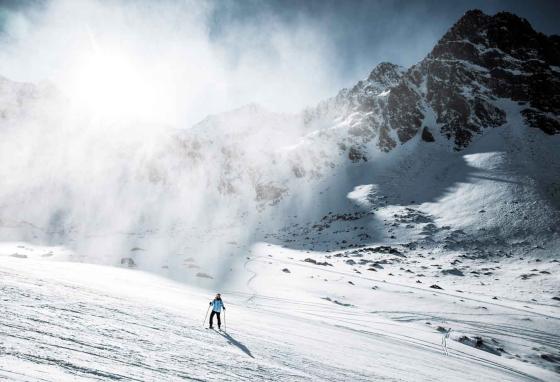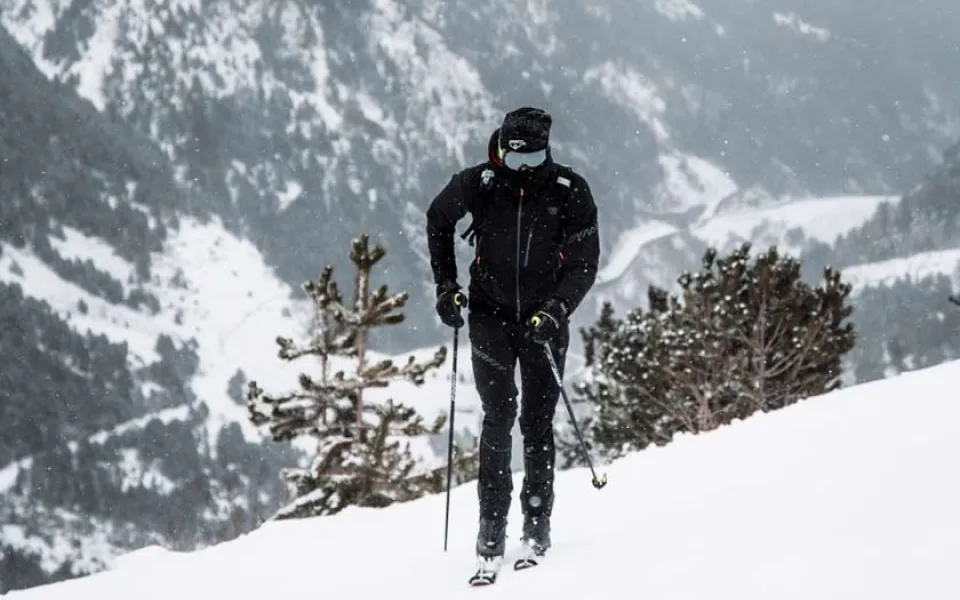One of the reasons why the sport of skiing is so popular is the fact that there are so many different types of skiing. One form which has remained popular for generations is cross-country skiing. But, what is cross-country skiing and how exactly do you explain cross-country skiing?
Well, according to the Cambridge Dictionary: “Cross-country skiing is the activity of skiing along tracks across country on light, narrow skis to which only the front of your boots are fastened, so you can lift your heels.” That partly explains what is XC skiing, which is another name for the discipline, but it’s not a complete answer.
To properly understand what is cross-country skiing, it makes sense to spool back and consider that XC skiing was initially a means of transportation. Although it can also now be practiced as a competitive sport, cross-country skiing was primarily a method for people in Scandinavia to travel from one place to the other during that region’s snowy winter periods. In some parts of the world, it is still a practical endeavour, but most modern mentions of cross-country skiing refer to the sport and we’ll discuss that and some facts about cross-country skiing in this guide.
What is cross-country skiing?
Nowadays, anyone asking what is cross-country skiing is probably asking about the sport or the fun recreational activity. If you set off on a skiing holiday in an area such as Andorra, you’ll not only have the option of taking to the ski resort’s downhill slopes but there will be other Andorra winter activities on offer too. One such activity might be cross-country skiing.
In terms of what is the difference between cross-country skiing and downhill skiing, the latter is the type of skiing you can enjoy within the confines of a ski resort while the former involves exploring terrain that is usually found away from the ski resort. Put simply, cross-country skiing is more of an exploration and an adventure, as you set off to ski your way through an interesting countryside or landscape.
How to use this cross-country skiing checklist
Before you set off on a cross-country skiing experience, it’s vital to ensure you’re prepared. In fact, it is recommended that you go with an expert or a guide for your first cross-country skiing experience. To help you prepare, we’ll answer the big question of ‘What do you need to go cross-country skiing?’ by going through the following six-point cross-country skiing checklist.
Ski equipment
The type of skiing involved with cross-country skiing is quite different to that of downhill skiing. You’ll use a different technique, whether you opt for the more traditional cross-country skiing style of striding forward with a gliding motion across the snow or whether you use the more modern cross-country skiing style of adopting a motion similar to ice skating. No matter which style you go for, you’ll need all the usual skiing equipment, including warm skiing clothes, goggles, gloves, skis, poles, boots and a helmet. The main difference between downhill skiing and cross-country skiing is that the skis for going exploring in the country are longer and thinner.
 Ordino Arcalís Blog
Ordino Arcalís Blog
Accessories
As for the accessories of what to wear when cross-country skiing, you’ll want to start off by packing the same kinds of items as you’d take for a normal day of downhill skiing. That means items such as goggles or sunglasses. But, there are also some pieces of cross-country skiing gear that you wouldn’t usually have to worry about if staying on the pistes of a ski resort. These include a watch, a phone, a torch and food and drink.
What to wear cross-country skiing?
When it comes to what to wear cross-country skiing, you’ll definitely want to wrap up warm. In fact, you might want to make sure you’re even better protected from the cold than for a usual day out at the ski resort, considering you’ll be exploring a terrain that is more uncharted and considering this activity usually lasts longer. Summing up what to wear when cross-country skiing, make sure you have long underwear, thick socks, long trousers, a fleece, a ski jacket, gloves and a neck gaiter or balaclava. It’s a good idea to bring a few spares too, as you might be some distance away from the ski resort if a particular item of clothing gets really wet.
Food & water
We already mentioned above that you should think about food and drink if going cross-country skiing. That’s because a cross-country skiing session usually lasts longer than a downhill skiing one, plus you’ll be further away from a ski resort restaurant or shop. Fruit and water are both good options, but also consider energy bars, energy gels and isotonic sports drinks.
Navigation
Depending on where in the world you’re going cross-country skiing, the maps and navigation could be quite different. In any case, don’t rely on being able to access a GPS system as this might not be so reliable once you get out in the wild. That’s why going with an expert or guide who knows where they’re going is best.
Health & hygiene
You might also be wondering is cross-country skiing hard and asking yourself questions along the lines of ‘How do I prepare my body for cross-country skiing?’. The main way to get in shape before your holiday is to work out at home, and for that it’s key to note what muscles are used in cross-country skiing, which are primarily the quadriceps and gastrocnemius in the legs and the pectoralis major, deltoids and latissimus dorsi elsewhere.
